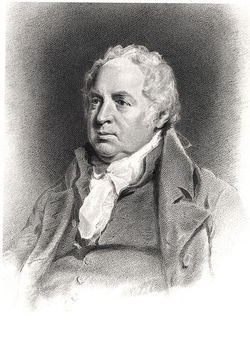Annotation:Poor Soldier (1) (The): Difference between revisions
No edit summary |
No edit summary |
||
| (One intermediate revision by the same user not shown) | |||
| Line 3: | Line 3: | ||
|f_tune_annotation_title= https://tunearch.org/wiki/Annotation:Poor_Soldier_(1)_(The) > | |f_tune_annotation_title= https://tunearch.org/wiki/Annotation:Poor_Soldier_(1)_(The) > | ||
|f_annotation=[[File:Shield.jpg|250px|thumb|right|William Shield]]'''POOR SOLDIER [1], THE.''' English, Country Dance (4/4 time). England, Dorset. D Major. Standard tuning (fiddle). AB. '''The Poor Soldier''' [https://en.wikipedia.org/wiki/The_Poor_Soldier] (1763) is the name of a two-act comic opera that was immensely popular in Britain, Ireland, and even the United States. The play was by John O’Keefe [https://en.wikipedia.org/wiki/John_O'Keeffe_%28Irish_writer%29] (1747–1833), but music was composed and arranged by violinist, violist and the successful composer William Shield [https://en.wikipedia.org/wiki/William_Shield] (1748–1829). Shield, like many composers for stage of his era, freely borrowed from folk repertory for many of his melodies. | |f_annotation=[[File:Shield.jpg|250px|thumb|right|William Shield]]'''POOR SOLDIER [1], THE.''' English, Country Dance (4/4 time). England, Dorset. D Major. Standard tuning (fiddle). AB. '''The Poor Soldier''' [https://en.wikipedia.org/wiki/The_Poor_Soldier] (1763) is the name of a two-act comic opera that was immensely popular in Britain, Ireland, and even the United States. The play was by John O’Keefe [https://en.wikipedia.org/wiki/John_O'Keeffe_%28Irish_writer%29] (1747–1833), but music was composed and arranged by violinist, violist and the successful composer William Shield [https://en.wikipedia.org/wiki/William_Shield] (1748–1829). Shield, like many composers for stage of his era, freely borrowed from folk repertory for many of his melodies. | ||
The finale of the work showcases a tune by the blind Irish harper Turlough O’Carolan (1670–1738), “[[John O'Connor]]” (“Planxty Mrs. O’Conor”). An early publication of the tune appears in 1799 by Thomas Calvert, a musician from Kelso, Scotland. A note with his collection states that Calvert supplied “a variety of music and instruments, instruments lent out, tun’d and repaired.” | The finale of the work showcases a tune by the blind Irish harper Turlough O’Carolan (1670–1738), “[[John O'Connor]]” (“Planxty Mrs. O’Conor”). An early publication of the tune appears in a collection published in 1799 by Thomas Calvert, a musician from Kelso, Scotland. A note with his collection states that Calvert supplied “a variety of music and instruments, instruments lent out, tun’d and repaired.” | ||
<br> | <br> | ||
<br> | <br> | ||
Compare the first strain with those of the American tunes "[[Joe Smith]]" and "[[ | Compare the first strain with those of the American tunes "[[Joe Smith]]" and "[[Love in a Village (5)]]." | ||
|f_source_for_notated_version= | |f_source_for_notated_version= | ||
|f_printed_sources=Trim ('''The Musical Heritage of Thomas Hardy'''), 1990; No. 93. | |f_printed_sources=Thomas Calvert ('''A Collection of Marches & Quick Steps, Strathspeys & Reels'''), 1799; p. 12. Trim et al ('''The Musical Heritage of Thomas Hardy'''), 1990; No. 93. | ||
|f_recorded_sources= | |f_recorded_sources= | ||
|f_see_also_listing= | |f_see_also_listing= | ||
}} | }} | ||
------------- | ------------- | ||
Latest revision as of 17:59, 30 March 2023
X: 1 T:Poor Soldier, The M:C L:1/8 B:The Calvert Collection - 1799, Page 12 Z:Nigel Gatherer K:D (ab/a) (fa/f/) (gb/g/) e2|(fa/f/) (df/d/) eecA|(ab/a/) (fa/f/) (gb/g/) (eg)|fedc [d2F2] [d2F2]|] A[dF][dF][dF] TB[gB][gB][gB]|A[dF][dF][dF] [dF][cE] [c2E2]|\ A[dF][dF][dF] TB[gB][gB][gB]|fedc [d2F2] [d2F2]|]

The finale of the work showcases a tune by the blind Irish harper Turlough O’Carolan (1670–1738), “John O'Connor” (“Planxty Mrs. O’Conor”). An early publication of the tune appears in a collection published in 1799 by Thomas Calvert, a musician from Kelso, Scotland. A note with his collection states that Calvert supplied “a variety of music and instruments, instruments lent out, tun’d and repaired.”
Compare the first strain with those of the American tunes "Joe Smith" and "Love in a Village (5)."

